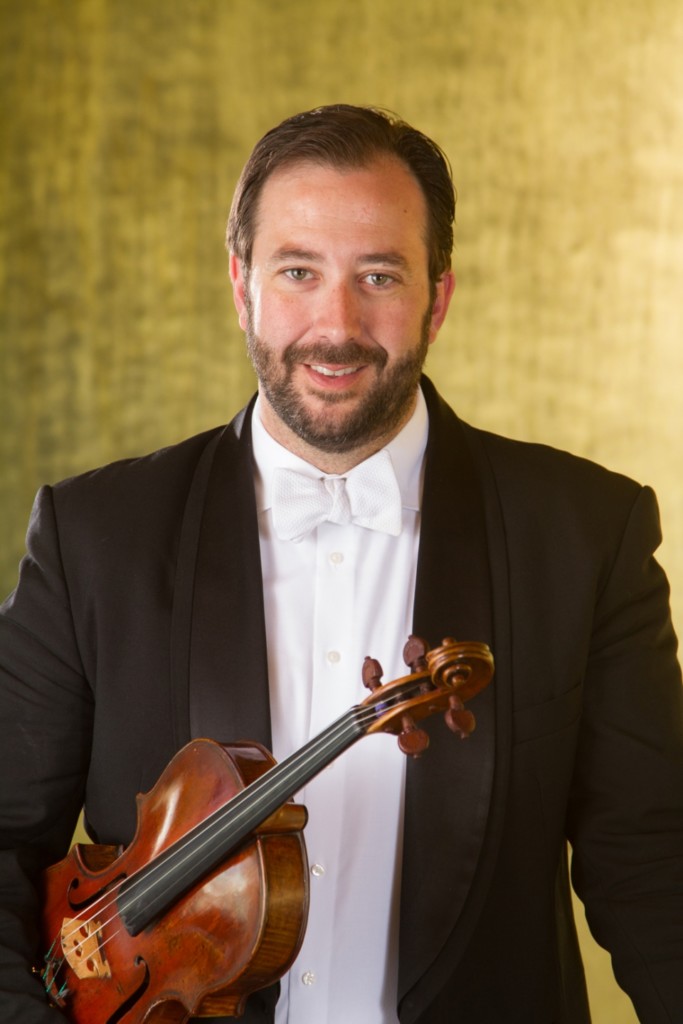Close ties of several varieties will connect the upcoming NOVA Chamber Music Series concert featuring string chamber music of György Ligeti (1923-2006) and Johannes Brahms (1834-1897), also featuring the Fry Street Quartet in its first performance as the organization’s new music directors.
One broad but close tie is how the music of Ligeti and Brahms from different eras connect with the same earthy, complex foundations that dominate their music, including ethnomusical impulses. Ligeti’s String Quartet No. 1 (1954) represents another close tie, signaling the Fry Street Quartet’s deep connections to the music of Hungarian composer Béla Bartók (1881-1945). Perhaps the most significant in two dimensions will be the presence of soloist Brant Bayless, principal violist with the Utah Symphony, who will perform Ligeti’s Sonata for Solo Viola and will join the Fry Street Quartet in the performance of Brahms’ String Quintet in G major, op. 111, among the last works the composer wrote. Bayless also is husband of Anne Francis Bayless, Fry’s cellist.
The concert, the second in the 2019-2020 subscription series, will take place Oct. 13 at 3 p.m. in the Libby Gardner Hall at The University of Utah.

Considered by many violists as one of the most demanding and complex works ever composed for the instrument, Ligeti completed the Sonata for Solo Viola in 1994, just after he turned 70. It comprises six movements but the last three are marked as ‘attaca,’ which means no break between them. The composer alludes to Romanian folk music elements in the first movement (Hora lungă) and then Hungarian elements in the third (Facsar). The use of microtones in the first movement and complex rhythm patterns in other movements reinforce Ligeti’s allusions to folk music language.
This will be the first time Brant Bayless has performed this work in public. In an interview published by the Utah Viola Society, he says, “Bought the music a few years ago, and buried it in my library because it looked too scary.” True to NOVA’s solid brand of fearlessness in music-making adventures, in which he has participated, Bayless said that this might be the most daring.
As for preparing the Ligeti sonata, he explains, “Slow practice is, of course, the foundation of everything. But small sections at tempo even if you’re not quite ready for it has a valuable place. I’m always striving to sound better and add to my depth of understanding during a session. Mindless repetition is NOT the way to accomplish that goal, and it’s certainly not the way to learn difficult music quickly.”

Bayless also makes a point that many musical scholars have noted about this particular work. The sonata’s structure is “on par with Bach’s skill in crafting his solo string Suites, Sonatas, and Partitas,” he adds.
Ligeti’s first string quartet also indicates how Ligeti innovatively fused musical language elements from folk and classical. Ligeti’s ancestral roots were German Jew and he came from Transylvania. He joined hundreds of thousands of refugees who fled Hungary in 1956 after the Soviet army crushed the brief freedom revolution that engulfed the Eastern European country.
Composed before the 1960s when he experimented with sound in ways similar to Stockhausen, Xenakis and others in contemporary music, Ligeti’s quartet reflects his admiration for Bartók’s artistic impact. “Bartók remained my idol until 1950, and he continued to be very important [to] me even after I left the country in 1956,” Ligeti said in an interview that was published in 1992 at the Hungarian Music Quarterly.
This 20-minute work is subtitled, Métamorphoses nocturnes. It is absolutely delightful but as an indication of just how harsh the Soviet occupation of Hungary was at the time, the string quartet was not given its premiere until after Ligeti fled the country in 1956. It was the Ramor Quartet, also Hungarian refugees, which premiered the work in a 1958 concert in Vienna.
The Brahms string quintet, which features two viola parts, opens with its own daring complexity for Bayless’ wife (Anne), a wicked passage that ignites the series of many thrilling moments in the work. Completed in 1890, the work echoes an aspect of Gypsy performance, a point cited by Alex Ross in his book Listen to This (2010). That is, “the practice of ‘allowing a soloist to emerge from the band and play an elaborate improvisation’ … Gypsy impressions were common in rousing fast movements, less so in adagios, where the composer was assumed to be speaking from the heart.”
Tickets for this concert are available at the NOVA website. The next program will be the first of two Gallery Series concerts (Nov. 3) featuring string chamber music of Mozart and Britten, as performed by the Fry Street Quartet.

